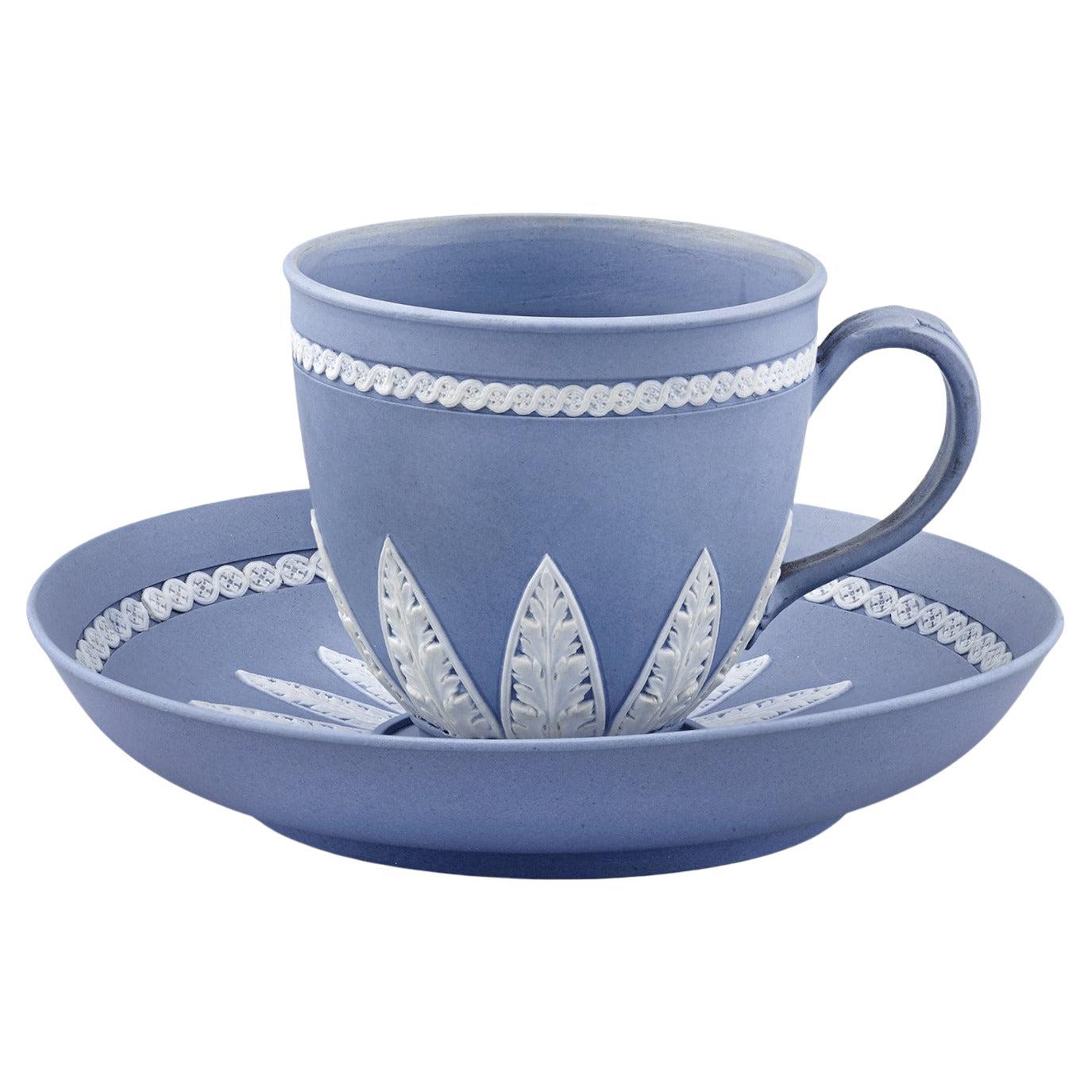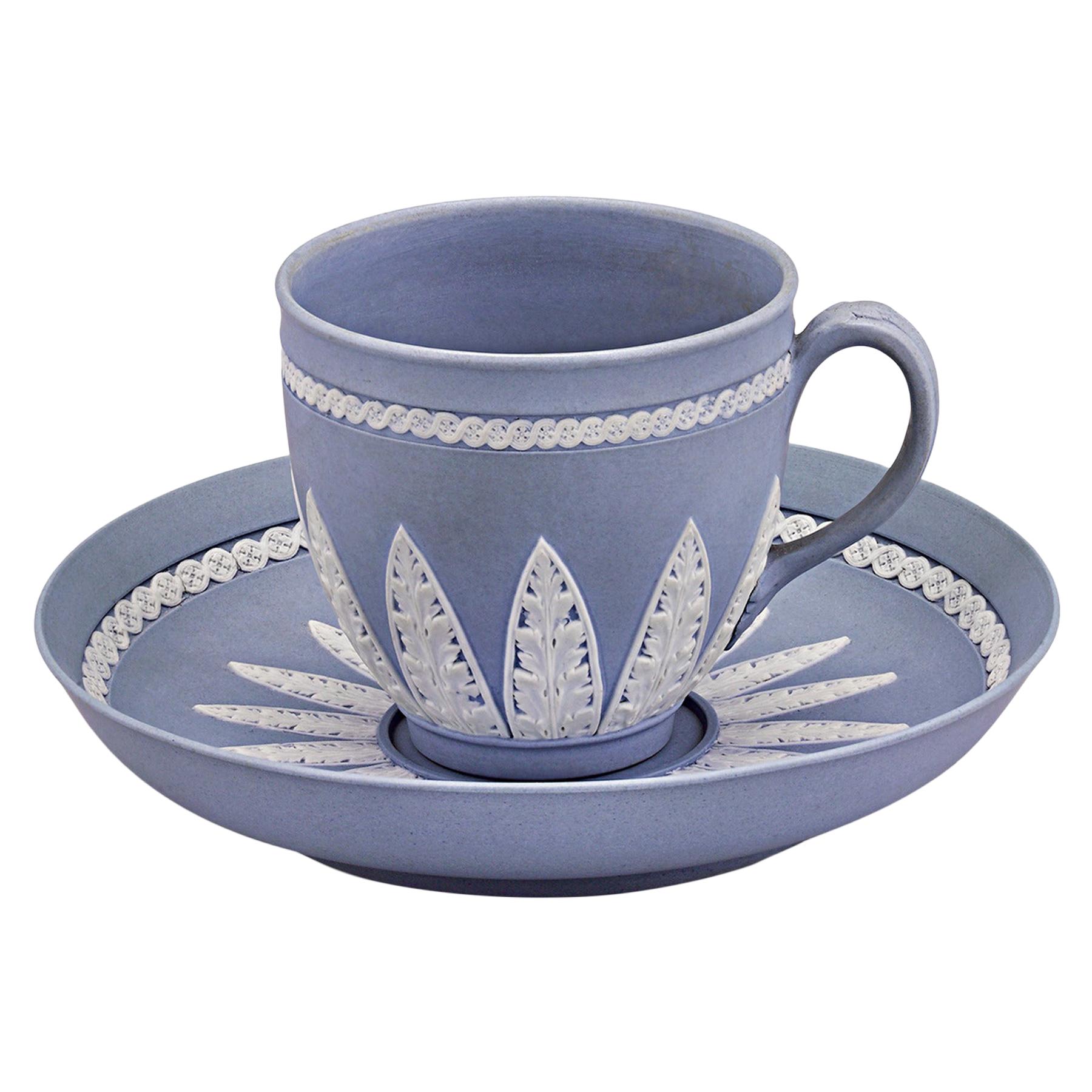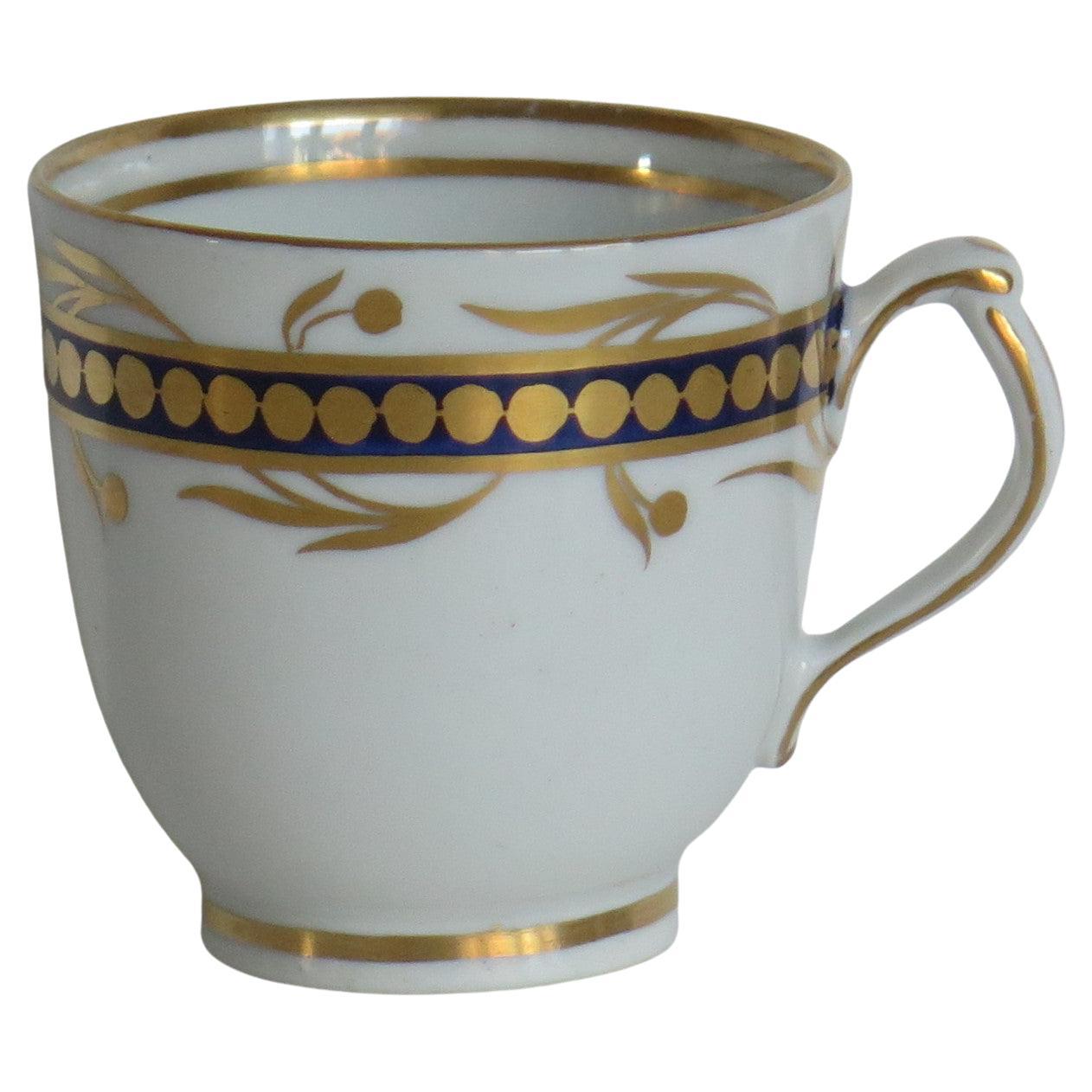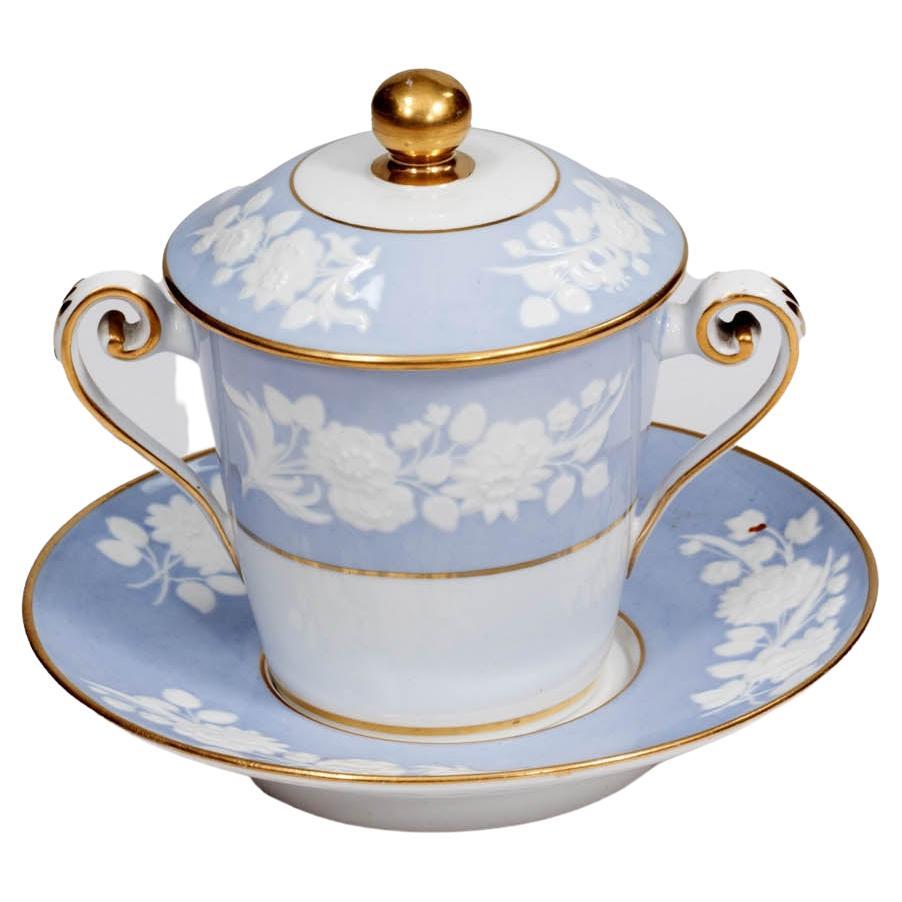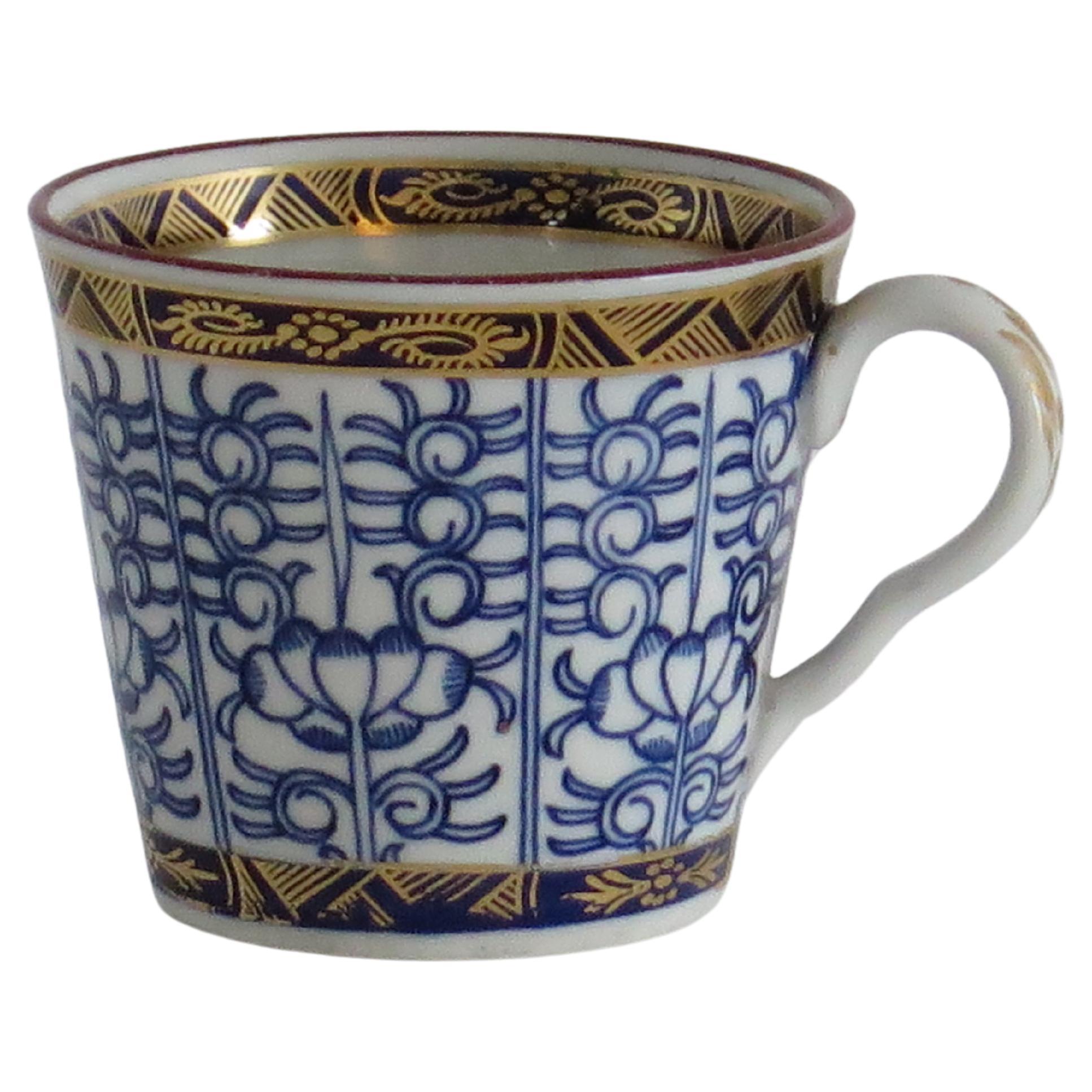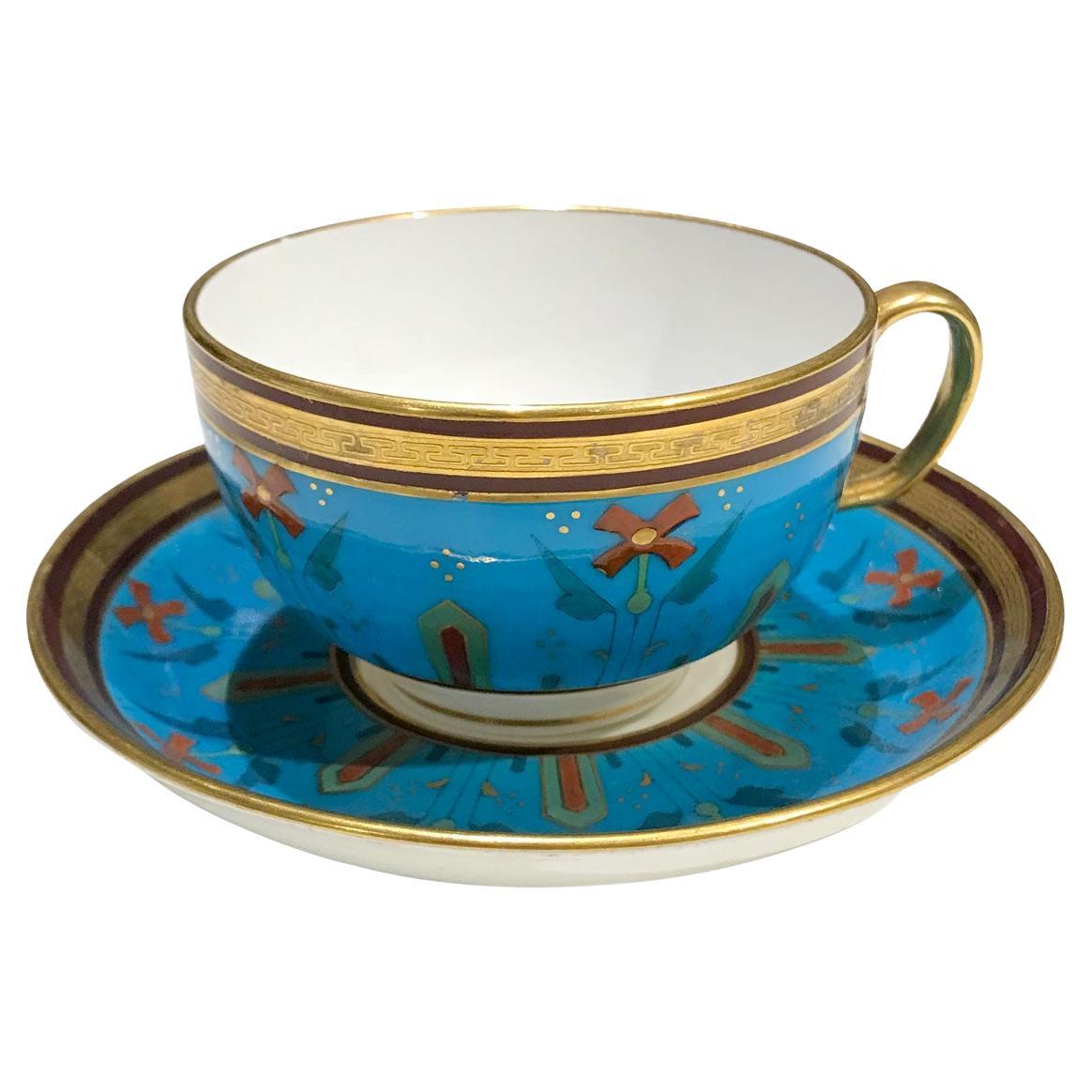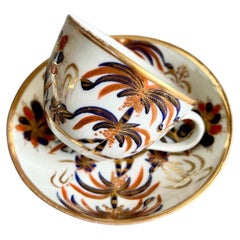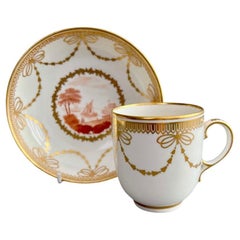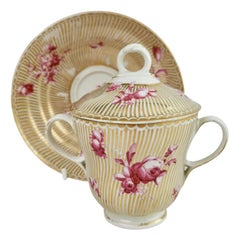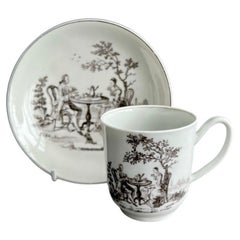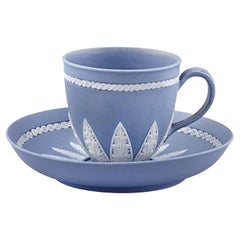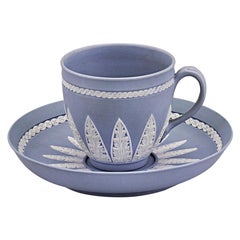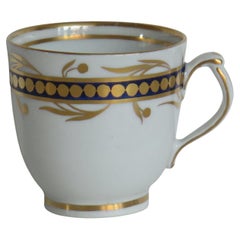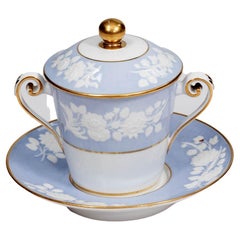Items Similar to Derby Porcelain Coffee Cup, Artichoke Pattern in Turquoise, Georgian ca 1785
Want more images or videos?
Request additional images or videos from the seller
1 of 15
Derby Porcelain Coffee Cup, Artichoke Pattern in Turquoise, Georgian ca 1785
$300per set
$375per set20% Off
£225.37per set
£281.71per set20% Off
€259.89per set
€324.86per set20% Off
CA$416.29per set
CA$520.36per set20% Off
A$462.59per set
A$578.24per set20% Off
CHF 242.40per set
CHF 303per set20% Off
MX$5,672.83per set
MX$7,091.04per set20% Off
NOK 3,091.69per set
NOK 3,864.61per set20% Off
SEK 2,908.55per set
SEK 3,635.69per set20% Off
DKK 1,939.68per set
DKK 2,424.60per set20% Off
Shipping
Retrieving quote...The 1stDibs Promise:
Authenticity Guarantee,
Money-Back Guarantee,
24-Hour Cancellation
About the Item
This is a beautiful coffee cup and saucer made by Derby in about 1785. The set has the distinctive "artichoke" moulding and a bright turquoise ground with the white artichoke surface picked out in gilt. This design, although about 240 year old, is shockingly modern.
There are more items available in this pattern, see separate listings or send us a question!
The Derby Porcelain Company, later called Royal Crown Derby, is currently the oldest British porcelain factory still in production. The Derby pottery was one of the most prominent potteries right from the start of English porcelain production in the mid 1700s to today, and the factory went through many iterations. In the 1820s, it was called "Bloor Derby" as it came under the ownership of Robert Bloor; this factory later closed but its legacy was continued under the ownership of a group of employees, and later this was merged into a new factory called Royal Crown Derby, which is still in operation today and still carries forward some of the oldest patterns that have made it famous over the centuries.
The set is potted in very fine early porcelain - this is from the period that Derby started adding bone ash to its recipe so there might be some in it, but it is not as white and light as the later "bone china" that is now the standard all over the world. You can also see some imperfections such as soot baked into the glaze, and the glaze is not as even as more recent items would have been.
This pattern is intriguing with its surface moulding that is called "artichoke", picked out in gilt. The ground is bright turquoise, which was a fashionable and quite modern colour at the time. The colour is not completely even, which is a sign of the time; they were not capable of firing a completely even ground colour in this era.
Both items carry the puce crowned Derby mark.
CONDITION REPORT Both the coffee cup and the saucer are in good antique condition except a tiny chip off the rim of the coffee cup, and just some light wear, as visible in the pictures. The blue colour is slightly uneven, and there are some potting and glazing faults, as is normal for Derby items of this era.
Antique British porcelain is never perfect. Kilns were fired on coal in the 1800s, and this meant that china from that period can have some firing specks from flying particles. British makers were also known for their experimentation, and sometimes this resulted in technically imperfect results. Due to the shrinkage in the kiln, items can have small firing lines or develop crazing over time, which should not be seen as damage but as an imperfection of the maker's recipes, probably unknown at the time of making. Items have often been used for many years and can have normal signs of wear, and gilt can have signs of slight disintegration even if never handled. I will reflect any damage, repairs, obvious stress marks, crazing or heavy wear in the item description but some minor scratches, nicks, stains and gilt disintegration can be normal for vintage items and need to be taken into account.
There is widespread confusion on the internet about the difference between chips and nicks, or hairlines and cracks. I will reflect any damage as truthfully as I can, i.e. a nick is a tiny bit of damage smaller than 1mm and a chip is something you can easily see with the eye; a glazing line is a break in the glazing only; hairline is extremely tight and/or superficial and not picked up by the finger; and a crack is obvious both to the eye and the finger. Etcetera - I try to be as accurate as I can and please feel free to ask questions or request more detailed pictures!
DIMENSIONS coffee cup 6.7cm (2.75") diameter; saucer 12.2cm (4.75")
- Creator:Derby (Maker)
- Dimensions:Height: 1 in (2.54 cm)Width: 1 in (2.54 cm)Depth: 1 in (2.54 cm)
- Sold As:Set of 2
- Style:George III (Of the Period)
- Materials and Techniques:
- Place of Origin:
- Period:1780-1789
- Date of Manufacture:ca 1785
- Condition:Wear consistent with age and use. in good antique condition except a tiny chip off the rim of the coffee cup, and just some light wear, as visible in the pictures.
- Seller Location:London, GB
- Reference Number:Seller: A-DER71b-11stDibs: LU4805137759602
About the Seller
5.0
Gold Seller
Premium sellers maintaining a 4.3+ rating and 24-hour response times
Established in 2016
1stDibs seller since 2019
225 sales on 1stDibs
- ShippingRetrieving quote...Shipping from: London, United Kingdom
- Return Policy
Authenticity Guarantee
In the unlikely event there’s an issue with an item’s authenticity, contact us within 1 year for a full refund. DetailsMoney-Back Guarantee
If your item is not as described, is damaged in transit, or does not arrive, contact us within 7 days for a full refund. Details24-Hour Cancellation
You have a 24-hour grace period in which to reconsider your purchase, with no questions asked.Vetted Professional Sellers
Our world-class sellers must adhere to strict standards for service and quality, maintaining the integrity of our listings.Price-Match Guarantee
If you find that a seller listed the same item for a lower price elsewhere, we’ll match it.Trusted Global Delivery
Our best-in-class carrier network provides specialized shipping options worldwide, including custom delivery.More From This Seller
View AllNew Hall Hybrid Hard Paste Teacup, Palm Tree patt. 484, Georgian ca 1810
By New Hall
Located in London, GB
This is a beautiful teacup and saucer made by New Hall around the year 1810. The set is decorated in the very desired but rare palm tree pattern with the number 484.
We also have a ...
Category
Antique 1810s English Regency Tea Sets
Materials
Porcelain
$372 Sale Price / set
20% Off
Free Shipping
Derby Coffee Cup, Monochrome Sepia Landscapes Zachariah Boreman, ca 1785
By Derby, Crown Derby
Located in London, GB
This is a very rare and stunning coffee cup and saucer made by Derby in about 1785. The set has a white ground with graceful gilding, and two stunning little landscapes painted by Za...
Category
Antique 1780s English Romantic Tea Sets
Materials
Porcelain
$1,912 Sale Price / set
20% Off
Free Shipping
Chelsea-Derby Chocolate Cup Set, Gilt Stripes, Puce Flowers, Rococo 1770-1775
By Chelsea-Derby, Derby, Chelsea Porcelain
Located in London, GB
This is a beautiful chocolate cup set made by Chelsea-Derby between 1770 and 1775, which was the Rococo era. The set consists of a cup, a saucer and a cover, and is decorated in a st...
Category
Antique 1770s English Rococo Tea Sets
Materials
Porcelain
$940 Sale Price / set
23% Off
Free Shipping
Worcester Coffee Cup, Monochrome Black Print "Tea Party no.3", Georgian ca 1760
By 1st Period Worcester Dr. Wall
Located in London, GB
This is a very charming coffee cup and saucer made by Worcester in their First Period (sometimes called the Dr Wall Period) in about 1760. The items are decorated in a black overglaz...
Category
Antique 1760s English George III Porcelain
Materials
Porcelain
$472 Sale Price / set
20% Off
Free Shipping
Minton Teacup Trio, Bath Embossed, Green Flowers Patt. 38/680, ca 1830
By Minton
Located in London, GB
This is an elegant "true trio" consisting of a teacup, coffee cup and saucer, made by Minton in about 1830. The set is decorated with the beautifully hand painted pattern no. 680 con...
Category
Antique 1830s English Rococo Revival Tea Sets
Materials
Porcelain
$300 Sale Price / set
20% Off
Free Shipping
Samuel Alcock Porcelain Teacup, White with Flower Sprays, ca 1823
By Samuel Alcock & Co.
Located in London, GB
A teacup and saucer in the “half orange” shape, white with simple gilt rim and beautiful hand painted flower sprays
Pattern unknown but similar to 1082
Year: ca 1823
Size: cup diameter 10cm (4”), saucer diameter 14.2cm (5.5”)
Condition: excellent, some rubbing to gilt
There are several items available in this design, please see group image and ask for more info if interested.
The Samuel Alcock factory was operative in Staffordshire between 1822 and 1856, after which it was bought by Sir James Duke and Nephews. The factory started as a partnership between the young Samuel Alcock and the older Ralph Stevenson, who provided the factory and capital. Alcock quickly took the factory to great heights, building one of the biggest factories of its time. Alcock jumped on the new Rococo Revival fashion and served a huge new middle class market. The reason we now don't hear much about Samuel Alcock porcelain...
Category
Antique 1820s English Regency Tea Sets
Materials
Porcelain
$292 Sale Price / set
20% Off
Free Shipping
You May Also Like
Wedgwood Pale Blue Jasperware Coffee Cup and Saucer
By Wedgwood
Located in New Orleans, LA
Crafted by Wedgwood, this exquisite and rare assembled coffee cup and saucer set are comprised of the firm’s famous pale “Wedgwood blue” jasperware so prized by collectors and connoi...
Category
Antique 18th Century English Neoclassical Ceramics
Materials
Ceramic
Wedgwood Pale Blue Jasperware Coffee Cup and Saucer Set
By Wedgwood
Located in New Orleans, LA
Crafted by Wedgwood, this exquisite and rare assembled coffee cup and saucer set are comprised of the firm’s famous pale “Wedgwood blue” jasperwar...
Category
Antique 18th Century English Neoclassical Ceramics
Materials
Ceramic
Georgian Coffee Cup Porcelain Blue and Gilt Pattern, Staffordshire circa 1808
By Staffordshire
Located in Lincoln, Lincolnshire
This is a porcelain Coffee Cup, attributed to an English Staffordshire maker, in the early 19th century George 111rd period, circa 1805-1810.
The piece is well potted on a low foot with a plain loop handle, having an upper thumb spur.
The cup is decorated with an upper border pattern of a cobalt blue...
Category
Antique Early 19th Century English Georgian Ceramics
Materials
Porcelain
$221 Sale Price
45% Off
Free Shipping
19th Century Late Georgian Blue Spode Hot Chocolate Cup with Cover and Saucer
By Spode
Located in Dublin 8, IE
19th century late Georgian blue spode hot chocolate cup with cover and saucer, decorated with gilt highlights, and embossed white floral motif on a ...
Category
Antique Early 19th Century English Georgian Porcelain
Materials
Porcelain
Worcester Barr Period Porcelain Coffee Cup in Royal Lily pattern, circa 1800
By Barr, Flight & Barr Worcester
Located in Lincoln, Lincolnshire
This is a very good hard paste porcelain early Coffee Can or cup with a loop handle, hand decorated in the Royal Lily pattern by Worcester during the Barr p...
Category
Antique Late 18th Century English George III Ceramics
Materials
Porcelain
$216 Sale Price
43% Off
Minton Tea cup attributed to Christopher Dresser, 1871
By Minton, Christopher Dresser
Located in Paris, FR
Wonderful aesthetic movement tea cup in hand-painted and hand-gilt porcelain by the English manufactory Minton. Blue background with stylized red flowers imitating the cloisonné technique, very common in the Japonisme ware.
Attributed to Christopher Dresser, a famous designer that was working for Minton in 1867. He made very decorative designs, using very often this special shade of blue. A very small quantity of his work was signed, but the quality of some designs allows to make further -attribution to him, such as this tea cup.
Signed with Minton hallmarks beneath, "Minton", number of the model G596 (China ware...
Category
Antique 1870s English Aesthetic Movement Porcelain
Materials
Porcelain
More Ways To Browse
Chinese Turquoise Porcelain
Glass Artichoke
English 1700s
Antique Ash Can
Antique English Tea Pots
English Silver Coffee Pot
English Tea Cups
Blue Tea Pots
Chinese Blue And White Pot
Hand Painted China Tea Set
Cup Saucer Antique China
Georgian Turquoise
George Coffee Pot Silver
China Coffee Pot
Chinese Blue And White Tea Sets
Antique Pottery Tea Pot
Antique English Cup And Saucer
Georgian Silver Tea Sets
